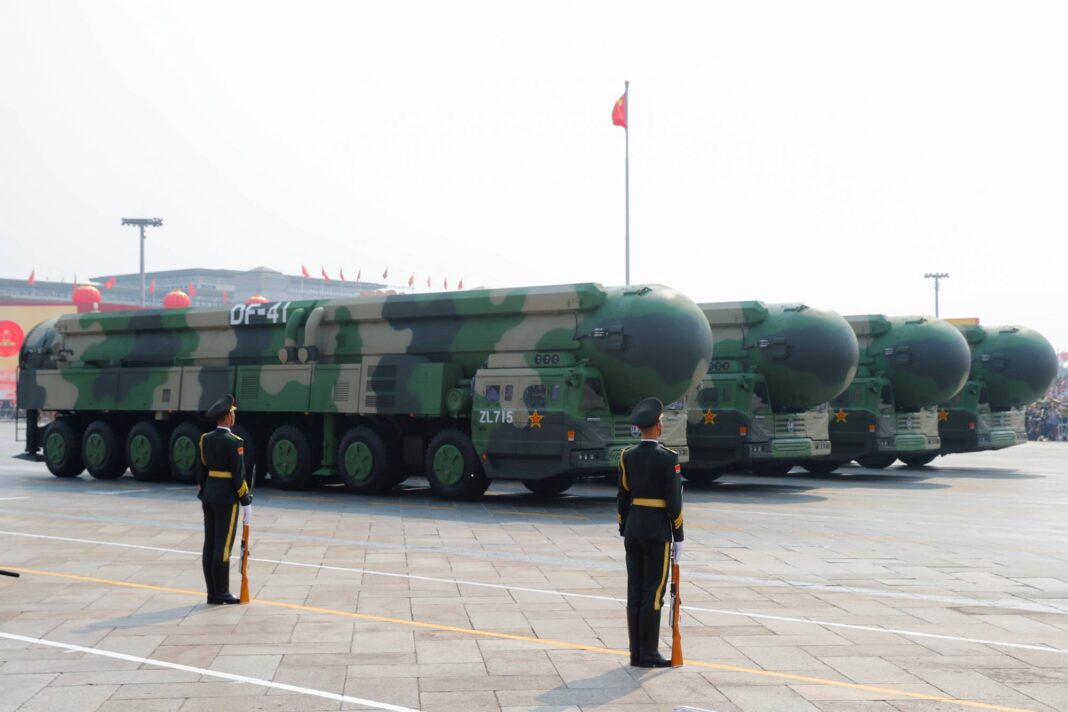China’s “breathtaking expansion” of its strategic and nuclear arsenal is a quickly escalating risk for the U.S., the head of U.S. Strategic Command plans to tell lawmakers at a closed-door hearing on Tuesday.
China’s first test of an intercontinental ballistic missile-launched hypersonic glide vehicle last July is a “technological achievement with serious implications for strategic stability,” Admiral Charles Richard wrote in prepared testimony posted on the website of the House Defense Appropriations subcommittee.The hypersonic vehicle flew 40,000 km (25,000 miles) for more than 100 minutes, Richard wrote in the testimony — the most detailed U.S. account of the test to date. It was “the greatest distance and longest flight time of any land attack weapon system of any nation to date,” according to the testimony. Richard gave similar testimony to both the House and Senate Armed Services Committees last month.
Every operational plan in the Pentagon and “every other capability we have, rests on the assumption that strategic deterrence, and in particular nuclear deterrence, will hold,” Richard said in his statement, which singled out the rising threat from Beijing as well as Moscow.
Both China and Russia have the capability to “unilaterally escalate a conflict to any level of violence, in any domain, worldwide, with any instrument of national power, and at any time,” Richard said. The U.S. armed forces no longer have “the luxury of assuming the risk is always low, particularly during a crisis,” he added.
Hypersonic Investments
“If strategic or nuclear deterrence fails, integrated deterrence and no other plan or capability in the DoD will work as designed,” he said.
China is investing heavily in hypersonic and directed energy weapons technology for global strike and defeat of missile-defense systems, anti-satellite, anti-missile, and anti-drone capabilities, Richard added.
Beijing has also boosted construction of nuclear missile fields in western China, each with about 120 missile silos, allowing the country to have “robust” ballistic missiles that would be capable of reaching the continental U.S., Richard said. Other advancements in the last year include ground-based, large phased array radars and at least one geostationary satellite capable of detecting ballistic missile launches, he said.
Russia is in its second decade of investing substantial resources to expand their strategic and non-strategic nuclear capabilities.
New Bombers
According to its publicly available nuclear strategy, “Russia acknowledges it could use nuclear weapons first, including in response to conventional attacks that threaten the ‘existence of the state,’” Richard said.
Last January, Russia accepted delivery of the first of 10 brand-new Tu-160M strategic bombers with updated NV-70M radar and NK-32-02 engines, according to the testimony.
That represented “an accomplishment not seen since the Cold War,” he wrote adding that “restarting the Tu-160M production line required cooperative efforts between the Kremlin and the Russian industrial base.”

